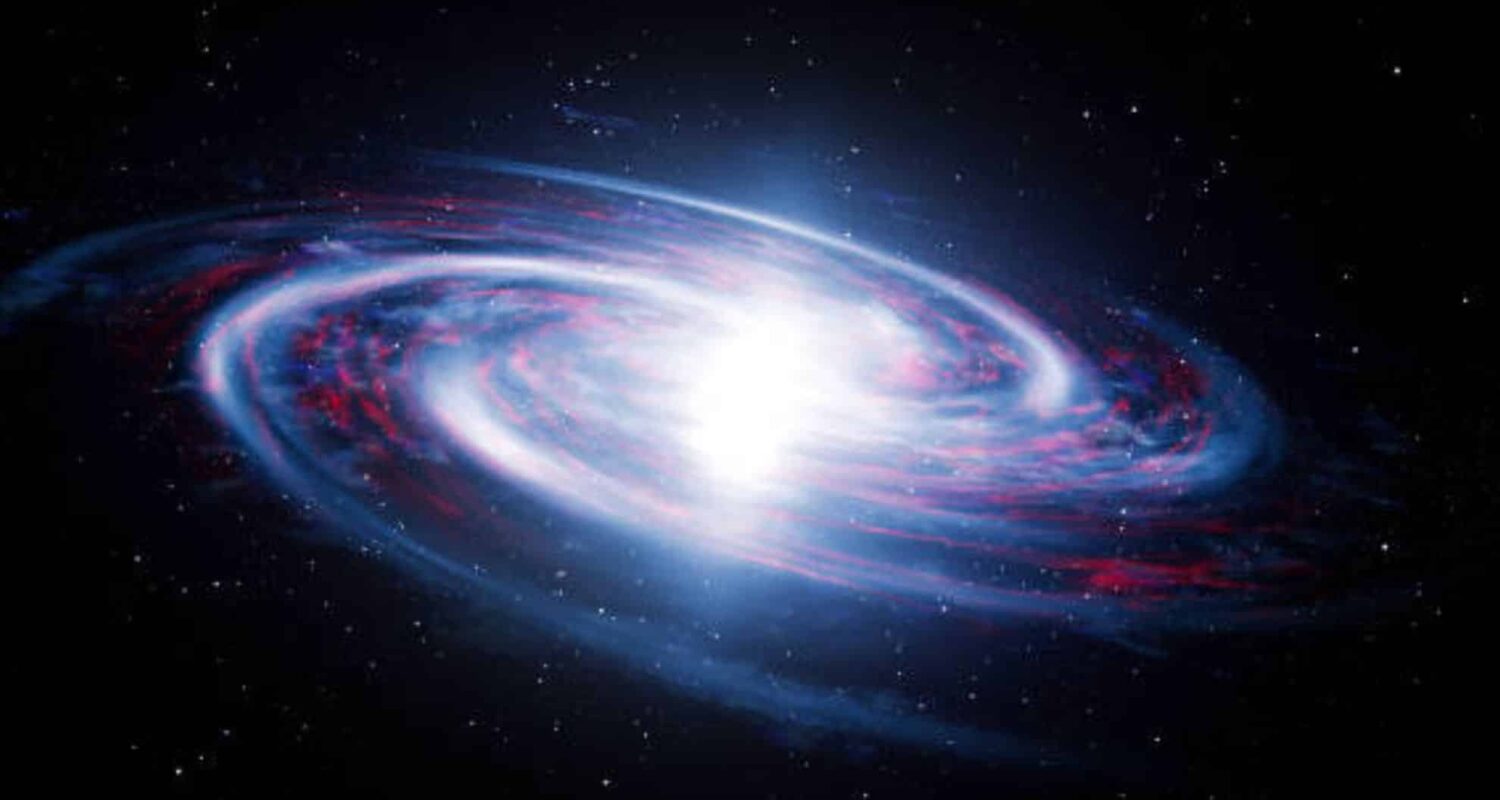One hundred years ago, astronomer Edwin Hubble discovered that our universe is not static, but rather “expanding.”
It has been observed that the more distant the galaxy, the faster it is moving away from us.
This means that the entire universe is inflating like a balloon, and is the basis of modern cosmology.
Another signature of the expansion of the universe is the Cosmic Microwave Background (CMB).
This can be considered an echo of the Big Bang that occurred about 13.8 billion years ago, and can be observed from all directions in the universe. The high-energy light emitted immediately after the Big Bang has had its wavelength stretched as the universe expands, and is now a weak microwave that spreads throughout the universe.
However, there is a serious problem with this method of measuring the rate of expansion: the values it gives don’t match.
This discrepancy in the observed values is called the “Hubble tension,” and is one of the greatest mysteries in current cosmology.
One hypothesis that has attracted attention as a possible solution to this mystery is that the entire universe rotates very slightly.
This hypothesis was proposed by a research team from Eötvös Loránd University in Hungary, the HUN-REN Wigner Research Centre for Physics, and the Institute for Astronomy, University of Hawaii.
Perhaps the geocentric theory has finally caught up with the times.
Why is the “difference in expansion speed” a problem?
The Hubble constant (H₀) indicates how fast the universe is expanding.
This value indicates the speed in kilometers per second at which an object 1 megaparsec (Mpc: approximately 3.26 million light years) away is moving away from it, and its unit is km/s/Mpc .
For example, if H₀ = 70 km/s/Mpc, then a galaxy 3.26 million light years away is moving away from us at 70 km per second.
There are two main ways to calculate the value of the Hubble constant.
One method is to perform a detailed analysis of the patterns of the Cosmic Microwave Background Radiation (CMB), which was emitted approximately 380,000 years after the Big Bang, and then use a theoretical model (ΛCDM) to “calculate” the Hubble constant based on the initial conditions of the universe recorded in the CMB.
The CMB is observed using artificial satellites (such as ESA’s Planck satellite) and measurements are taken with extremely high precision.
The other method involves observing “Type Ia supernovae,” explosions in the present-day universe that have the same brightness no matter where they occur in the universe, and measuring how much they have redshifted, in other words, how fast they are moving away from us.
The distance of the supernova can be determined accurately by using a “distance ladder” (a method called the “cosmic distance ladder”), which includes Cepheid variable stars, to directly calculate the current expansion rate of the universe.
The difference between these two methods is that one is an inference from the “past” based on theories of the early universe, while the other is a direct measurement based on observations of the “present” universe.
Indirect measurements based on the early universe (CMB derived): approx. 67 km/s/Mpc
Direct measurements based on nearby galaxies (supernova observations): approx. 73 km/s/Mpc
This difference is too clear to be explained by simple error and was derived from careful analysis of some of the largest amounts of data in astronomy.
The “variability” of these values obtained using different observation methods is statistically significant, at a level called “5 sigma (standard deviation),” meaning that the probability of such a difference occurring by chance is extremely low. “Sigma” here is a measure of how much variation there is in the values among many observation results.
This discrepancy in the Hubble constant not only indicates a “difference in time” – that is , the expansion rates of the early universe (CMB) and the present universe (supernova) are different – but also suggests a discrepancy in the “spatial extent” – that is, the expansion patterns observed in the “far” (frontier) and “near” (nearby) parts of the universe are different.
This is because when we observe the universe, the speed of light is limited, so the farther we look, the earlier the universe appears . In other words, due to the nature of observation, where “far = past” and “near = present,” spatial extent overlaps with temporal depth.
This “observational discrepancy” is called “Hubble tension.” Although the literal translation would be “tension in the Hubble constant,” it is actually a technical term that means “the discrepancy in the expansion speed obtained from different observations.”
Many hypotheses have been proposed to answer this question.
For example, there are theories that change the properties of dark energy and models that assume the existence of new, unknown particles (dark photons), but all of these have issues with their consistency with the current standard cosmological model (ΛCDM), and a definitive solution has yet to be reached.
In response to this problem, one of the researchers, Dr. Sapudi of the University of Hawaii, said he wondered, “If the stars, galaxies, and black holes are all rotating, then surely the entire universe is rotating as well?”
Introducing a slight “rotation” into the universe itself is an unprecedented approach to the problem of the discrepancy in the Hubble constant.
The hypothesis that the universe rotates
In this research, one possible explanation for the Hubble tension is proposed to be the hypothesis that the entire universe is rotating very slightly. By “rotating,” we do not mean that celestial bodies like the Earth or galaxies rotate, but that space-time itself has a slight angular momentum .
The research team adopted the ” dark fluid model ,” a theory that describes the expansion and dynamics of the entire universe by treating dark matter and dark energy as a single unified “fluid.”
What does it mean for the universe to rotate?
So what does it mean that the universe rotates?
The rotation mentioned here does not mean that things in space are moving, but that ” space itself has angular momentum .” This is a state in which “space-time,” which deals with space and time together, is slightly twisted.
The research team calculated the effect of this space-time rotation on expansion using a mathematical model that uses the physical coordinates of a non-expanding system.
The question of whether time rotates as the universe rotates
When many physicists hear that the universe is rotating, the first thing they are concerned about is the problem of the ” Closed Time-like Curve (CTC) .”
When we hear that the universe rotates, we tend to imagine a sphere rotating, but the universe is not an object floating in space; it is itself a structure made up of space-time (time and space).
When such a structure rotates, it can be interpreted that time also rotates.
So as the universe rotates, it’s possible for the fabric of space-time to twist, creating a “closed temporal loop” (CTC) that would take us from the future back to the past along a specific path.
This is theoretically equivalent to a phenomenon called “time travel,” and poses serious problems as it violates the law of causality (the order of cause and effect).
The universe may be spinning silently
The idea that the entire universe rotates slowly may seem hard to believe.
However, if this previously inexplicable “observational discrepancy” can be resolved naturally, it could be a discovery that will rewrite our view of the universe.
Of course, this theory is still just a hypothesis, and further work is needed to develop a more accurate model using general relativity and verify its consistency with other observational data.
Still, this research, which began with the simple question, “If stars, galaxies, and black holes all rotate, then isn’t it possible that the entire universe rotates as well?”, demonstrates the power of “simple questions,” which are the origin of science.
There is also a lot of excitement on the Internet overseas about whether this hypothesis that the universe rotates is related to the idea that the universe exists inside a giant rotating black hole. This would also broaden the scope of our imagination regarding the origin and structure of the universe.
The night sky that we look up at may actually be spreading out silently in a magnificent rotation.

